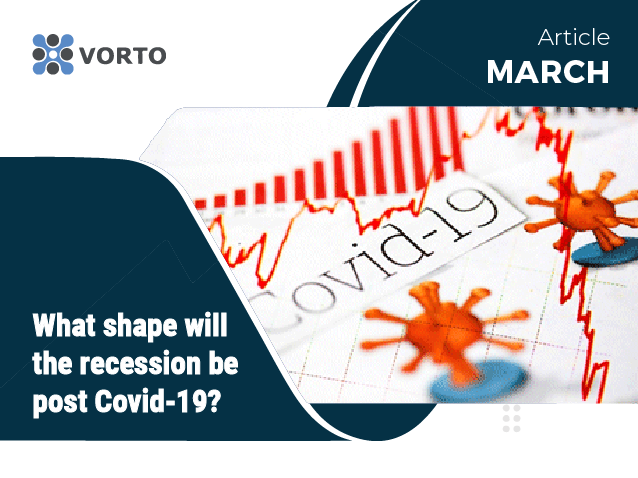Since the start of the pandemic, there has been great speculation as to what shape a recession might be. There are arguments that the recovery from COVID-19 will be V-shape. In this instance, there would be a sharp decline in the economy. However, this is quickly followed by a rapid recovery back to a previous peak in under a year. This best-case scenario is aided by economic measures taken by central banks and governments as well as strong consumer spending.
By the end of May 2020, unemployment showed a sharp rise. Financial markets were subject to uncertainty and a rocky path. Supply chains were disrupted worldwide. As a response, governments and central banks pumped trillions into their economies whilst simultaneously slashing interest rates. For the optimistic economists amongst us, we could look back retrospectively to the V-shaped recession in America in 1953 in a post WW2 economy which was upended by high interest rates. Despite a steep decline in growth, the economy was booming a year later. After 3 months of international lockdown to fight the virus, we were starting to see the other side of the first wave of the virus and the V-shaped recovery seemed hopeful.
Yet at the start of summer 2020, Bloomberg Opinion countered this optimism with a headline stating ‘that V-shaped Recovery Isn’t Happening’. Why? Without a vaccine, ‘there can be no V-shape economic recovery’ the thought leadership piece continued. In order to have this type of recovery, we would expect the economy to bounce back within a year. However, the latter half of 2020 saw a global race to get a safe and effective vaccine. During this time, we endured the onset of the second and third wave of the virus, alongside new variants.
At this point, speculation started to arise that perhaps the recovery would be U-shaped. In line with this view, WeForum interviewed over 600 CEOs to establish their thoughts regarding what shape the recovery would be. 42% disclosed that they believed it would follow a U shape. However it is worth stating that this statistic is subject to geographical bias as 55% of European CEOs predict a U-shape recovery, which is significantly higher in comparison to the global average. A U-shape recovery illustrates a more gradual drop in the economy that lasts between 1-2 years. The economy stagnates for a while before returning to a relatively healthy rise.
Global investment manager Schroders shared how their prediction for the recovery moved from V-shaped to U-shape due to complications governments faced when looking to lift lockdowns. Governments have been forced to face trade-offs between starting economies and the health risks of people being exposed to the virus. In addition to this, consumers have been more cautious due to the virus. For areas such as hospitality, travel and leisure sectors, these have not been available for people to enjoy and thus spending habits have subsided and will take time to return to pre COVID-19 levels. As well as this, business investments have been subject to uncertainty. All of these factors, alongside the second and third wave have pointed towards a U shape recovery in lieu of a V shape.
However, there is a hypothesis that the recovery could in fact be L shaped. In this scenario, there is a sharp decline in the economy which is followed by a slow recovery period. This kind of recovery is often punctuated by persistent unemployment and it takes a few years to regain pre-crisis levels. Economics Observatory describes the L-shape recovery as one that is incomplete within the next three years. This would be realised if social distancing becomes the new societal norm. If this would be true, some industries would be permanently weaker. For instance, hospitality would be limited in terms of the number of people they would welcome and thus the amount of profit they could make. Travel companies may be forced to run business with fewer people. Retail could face a future whereby they are forced to limit store traffic. This in turn would impact jobs and automation could replace labour.
As the world gets to grips with vaccinating the population and managing their exit strategies regarding lockdowns, it is looking less likely that the recovery will be V shape, but rather U or L. However, when it comes to speculating the outcome, it is important to consider the geopolitical implications of the recovery and how different governments and markets are responding to the crisis. However, as we move throughout 2021, time will tell.
